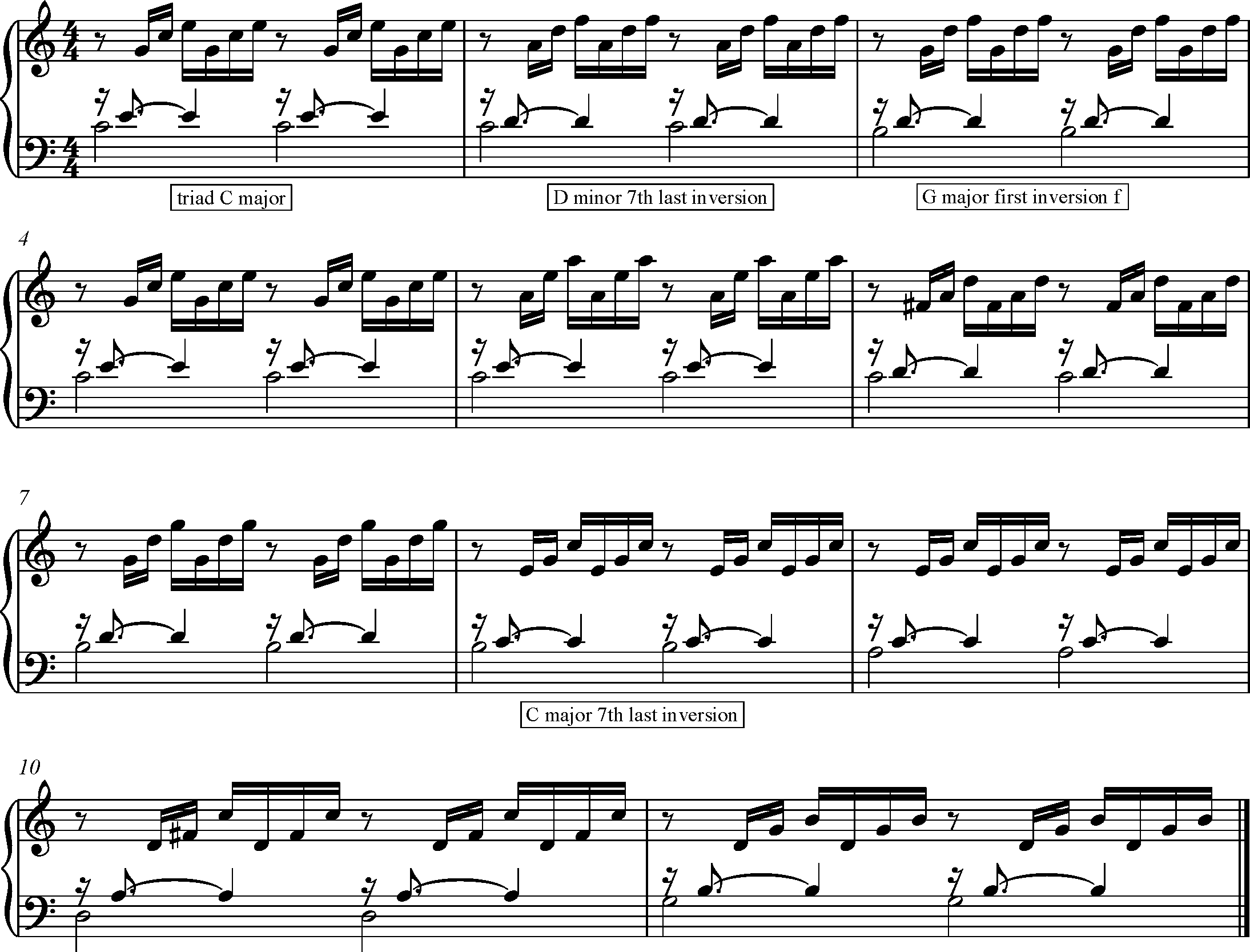C1B | Minor and major 7th chords
Minor 7th chords
- Listen to the opening 7th chords in the song The Fool on the Hill by The Beatles.
- This chord is created by adding the interval of a minor 7th above the root of a minor triad. The chord is also called a secondary 7th chord
In contrast to the dominant 7th chord, the original triad is a minor triad.
Notice the top note which has been added to the triad. It creates a minor 7th interval with the bottom note (root).
In contrast to the dominant 7th chord, this chord doesn't have the feeling that it needs to resolve to another chord.

D minor chord
D minor 7th (or secondary)
G minor chord
G secondary 7th (or minor)
- A minor 7th chord in its 1st inversion can also be regarded as a major triad with an added 6th note.
- These chords are called added 6th chords, and are popular when composing contemporary or popular songs. The two following chords are the two chords in The Fool on the Hill.
It has now become a D major chord with the 6th added above the lowest note. This chord is called the additional 6th chord.
It has now become an additional 6th chord in B♭ major. This chord is sometimes referred to simply as strong B♭6.

B minor 7th chord
B minor 7th in first inversion
G minor triad
G minor 7th chord in first inversion
- In the song The Fool on the Hill, the opening Bm7 chord turns into an added 6th (D6) quite soon. Listen again carefully.
- Look at these chords – a series of chords is often called a sequence.

D minor 7th chord
D minor 7th chord in 3rd inversion
C major triad
D minor 7th chord in 3rd inversion, allowing for the C note to be a pedal note
- In the Prelude no.1 in C major by J.S. Bach, we can see how the first chord of C major changes to Dm7 in its last inversion by keeping the root of the first chord as a pedal note in the second.

Further analyse the chords. Assemble the notes together and try to find the root by rearranging them into a root position. Bar 2 has already been analysed below:
The top note of this chord is the lowest note of the previous chord. The previous chord is therefore in the 3rd inversion or the iid position. But why ii? The D minor chord is a ii chord in the C major key.

Position the notes in a chord format.
Rearrange the notes so that they form the above shape. Go back to the original chord so as to see which chord note is the lowest in order to decide which inversion the chord is in. If the top note (as in the example) is the lowest note in the original chord, the chord is therefore in its 3rd inversion or last inversion.
Major 7th chords
Listen to the opening 7th chords in the work Gymnopédie no. 1 by the French composer Erik Satie
The opening two chords are 7th chords. This time, however, they are major 7th chords – G maj7 and D maj7. Here they are – as they are seen in the work, and then in their compact form, their root position.

Now, look again at bar.8 of the Prelude by Bach. You can see that this is a major 7th chord in its last inversion.
